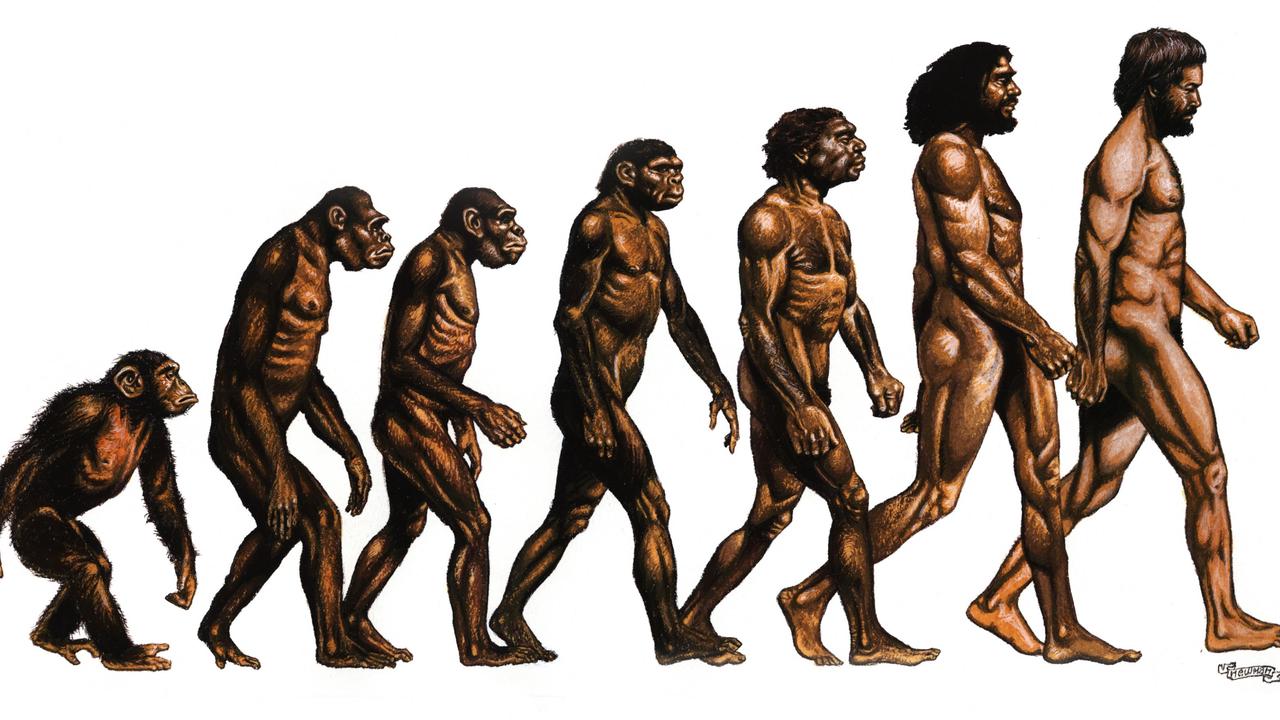The Evidence for Human Evolution from Ape-Like Ancestors
Our Close Genetic Relationship with Other Apes
Humans share over 95% of their DNA with chimpanzees, our closest living relatives. By comparing human and ape genomes, scientists have discovered clear evidence that human chromosome 2 was formed by the fusion of two smaller ape chromosomes. This genetic change would have reduced fertility between early humans and other apes, driving greater genetic divergence and accelerating the rate of human evolution.
A Shared Ancestral Chromosome Fusion
If we examine human chromosome 2 more closely, we see remnants of the centromeric regions from the two ancestral ape chromosomes. This provides irrefutable evidence that human chromosome 2 was formed through the fusion of two smaller ape chromosomes sometime after our lineage split from chimpanzees. The positioning and sequence of genes on human chromosome 2 precisely matches what would be expected from the combination of two ancestral ape chromosomes.
Genetic Similarities Outweigh Differences
While a few key genetic differences distinguish humans from other great apes, the preponderance of shared genetic sequences overwhelmingly demonstrates our close evolutionary kinship. Over 99% of human and chimpanzee genomes are identical, with most variations consisting of single altered DNA letters rather than large-scale rearrangements. Such pervasive genetic continuity of form and function affirms our recent common ancestry from ape-like forebears.
Homologies in Anatomy and Embryonic Development
Not only is the genetic evidence conclusive for human descent from ancestral apes, but comparative anatomy and embryology provide further corroboration. Detailed study of anatomical structures and developmental patterns reveal substantial homologous features between humans and other primates.
Skeletal and Muscular Convergence
From head to toe, human and ape skeletons exhibit striking similarities in bone number, structure and articulation. Our grasping hands and feet, flexible spine, and relatively large brains also show clear parallels to those of living apes. Even minor muscle connections in the hands and face correspond between species, implying deep ancestral continuity rather than separate supernatural creation.
Recapitulating Phylogeny in the Womb
During human development, embryos pass through stages resembling the basic anatomies of ancestral vertebrates. Remarkably, embryos also evolve transient ape-like features such as tail buds late in the first month. This ontogenetic retracing of evolutionary ancestry through homology aligns precisely with our inferred phylogenetic relationship to other primates.
Evidence from the Fossil Record
While morphological differences separate modern humans from living apes, the fossil record documents intermediate forms establishing a gradual evolutionary transition between the two groups over millions of years. Transitional hominin species linking early apes to later hominins provide the missing links predicted by Darwinian evolution and crucial for understanding human origins.
Ancient Hominoids from Africa
Among the earliest hominin fossils are 6 to 7 million year old specimens from Sahelanthropus, Orrorin, and Ardipithecus that combine ape-like and human-like traits. Cranial and skeletal features link them firmly to the African hominin lineage leading to later hominins including Australopithecus. Their mosaic of primitive and derived characters implies ancestry from more primitive common ancestors.
The Genus Australopithecus
Fossils dated 3 to 2 million years ago demonstrate the genus Australopithecus had diverged into multiple species adapted to different environments and diets across Africa and the Middle East. Features including bipedalism, encephalization, and robust or gracilized morphologies illuminate critical stages of human physical and behavioral evolution from tree-dwelling primate antecedents.
Continuity to Early Homo
Gradual modifications in the skull, dentition and postcranial skeleton establish transition from the more primitive Australopithecus to early members of the genus Homo by around 2 million years ago. Finds like Homo habilis from Olduvai Gorge provide compelling evidence for direct ancestry and a linear evolutionary sequence leading unambiguously to later ancient humans including Homo erectus, H. heidelbergensis and ultimately our own species Homo sapiens.
Genetics, Anatomy and Fossils Converge on the Evidence
Three critical lines of evidence combining genetics, morphological comparisons, and the fossil record consistently point to a shared ancestral history connecting modern humans intimately to other living and fossil apes. While specific details about intermediate forms and precise timing remain to be clarified, overwhelming convergent data from multiple fields of science irrefutably demonstrate that humans did indeed evolve from ape-like forebears many millions of years ago. Further research will continue to elucidate key stages of this evolutionary unfolding, but the fundamental conclusion is incontrovertibly supported by scientific facts.


